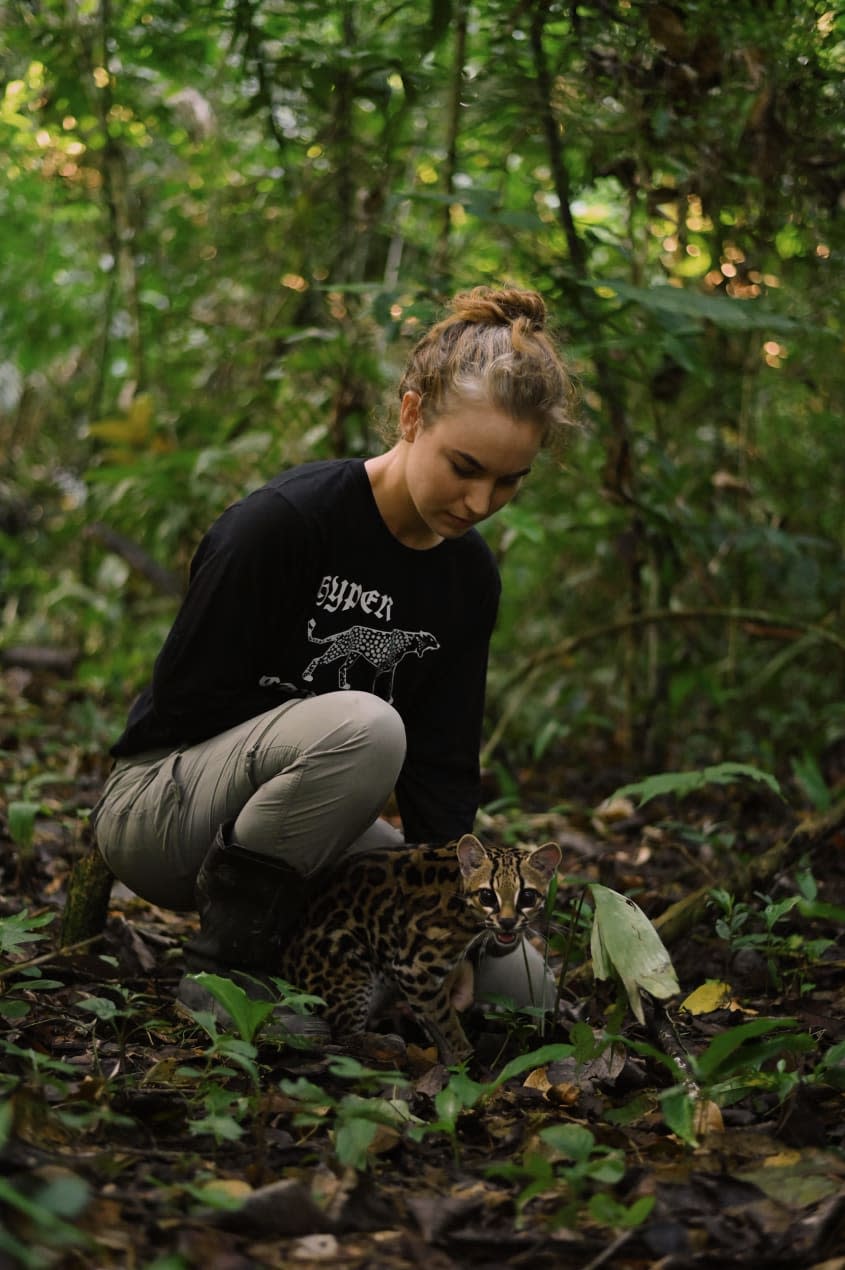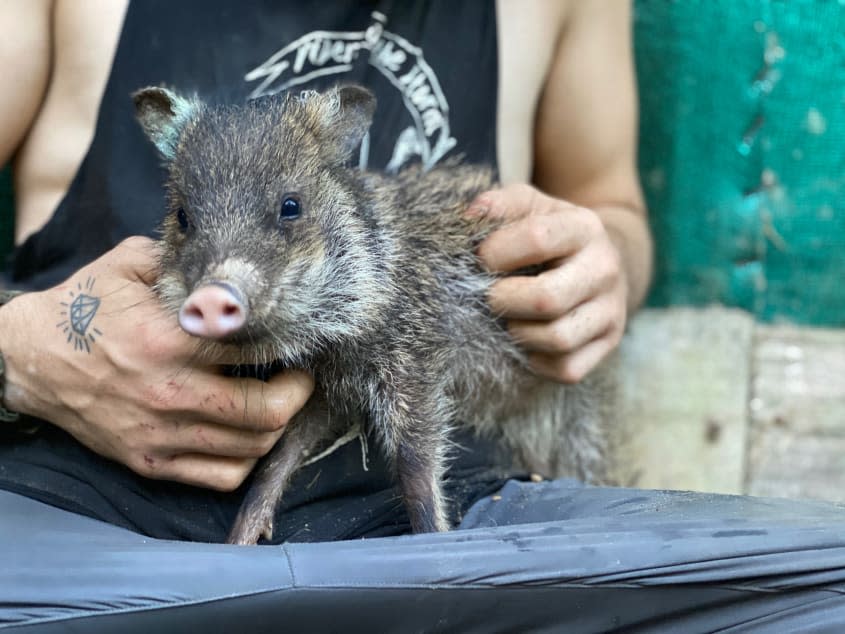Conservationist Samantha Zwicker and Hoja Nueva are working to keep the Peruvian Amazon wild
Fighting back against deforestation, animal trafficking, and other threats to biodiversity isn't easy, but Samantha Zwicker and Hoja Nueva are up to the challenge — and seeing success.
Zwicker is the founder and co-director of Hoja Nueva, a conservation organization and rehabilitation center in the Las Piedras region of the Peruvian Amazon. This is one of the most biodiverse areas in the world, home to more than 100 species of mammals, 200 species of reptiles and amphibians, and 700 species of birds. The organization's mission is to protect the land; rescue and rewild animals; conduct ecological research; and empower and educate local communities on conservation efforts.

Courtesy of Hoja Nueva
Growing up, "I was definitely connected with animals, and very embedded in nature," Zwicker told The Week. As an undergraduate at the University of Washington, Zwicker had the opportunity to assist a PhD student with a project in Peru, and "ended up falling in love with it," she said. "In the beginning I was working in gold mining areas ... these are completely barren landscapes, where the land has been blown up." Coming to Las Piedras was "like going to another world that's fully intact, pristine wilderness," Zwicker said, and she wanted to "protect it from becoming what I'd just experienced."
That was nearly 10 years ago, and since then, she's established Hoja Nueva and been featured in the documentary Wildcat. The team at Hoja Nueva lives by the "R"s — researching, rescuing, rehabilitating, and reintroducing wildlife in the Peruvian Amazon — and there are nearly 60 animals in their care now. Zwicker is primarily responsible for new or baby animals, helping them get accustomed to life at the rescue. Hoja Nueva often works with the Peruvian government to coordinate rescues of animals seized from traffickers, and in recent weeks brought in a young jaguar and ocelot.
"Animals come to us that don't make it, and that's the hardest part, if I'm honest," Zwicker said. "You have to focus on the animals you have that do make it, and the next ones that need you. If you stop, then there's so many more that aren't even going to have that chance."

Courtesy of Hoja Nueva
While the ultimate goal is to reintroduce animals to the wild in order to stabilize and fortify their populations, a few animals that cannot be released due to trauma and health conditions have found their forever homes at Hoja Nueva, including an ocelot. "They get to live like little kings and queens," Zwicker said. "It's nice to have these wins and make an animal feel happy and safe."
The work of Hoja Nueva and Zwicker never stops. Goals include getting government protection for Las Piedras and possibly expanding operations to northern Peru, an animal trafficking hotspot, in order to directly address the problem. "We also want to have a bigger impact on research and science coming out of this region, so people can recognize how incredible and vital it is," Zwicker said.

Courtesy of Hoja Nueva
The bright spots, like rehabilitating what will soon be the first jaguar successfully rewilded in Peru and growing the Hoja Nueva team to include volunteers and interns from around the world, shows Zwicker that what she is doing matters and is changing the Peruvian Amazon for the better. Hoja Nueva is Spanish for "new leaf," a phrase that came to Zwicker during her early days in Peru when she saw a sprout coming out of a tree.
"It's a really beautiful name and it made sense with the saying 'turning a new leaf,'" Zwicker said. "I wanted to turn a new leaf for conservation, and approach it differently in this region."
You may also like
5 sharply funny cartoons about Biden's surprise visit to Ukraine

